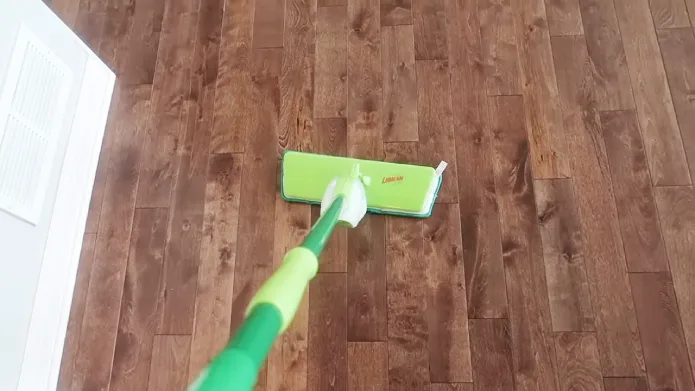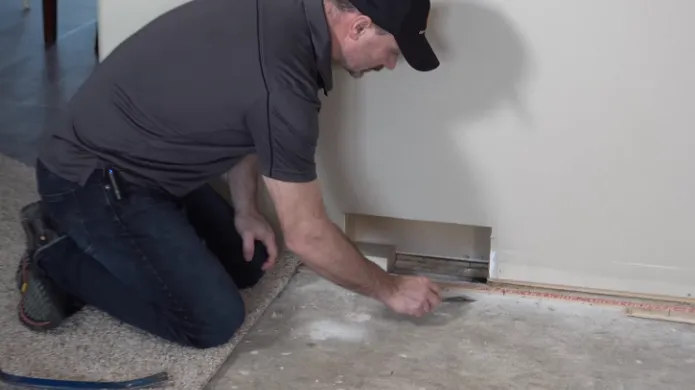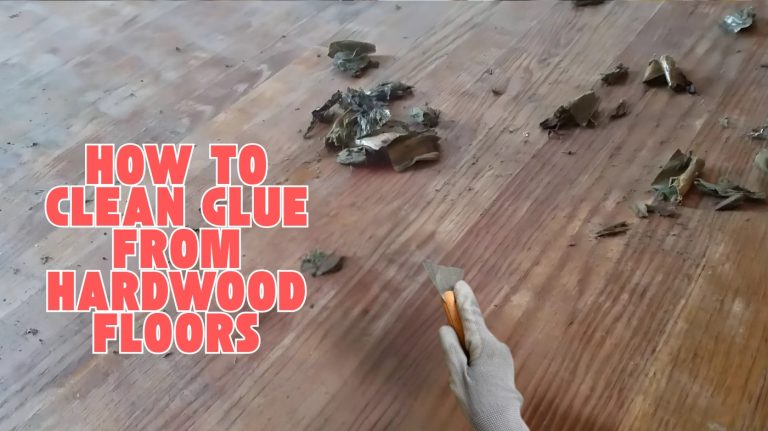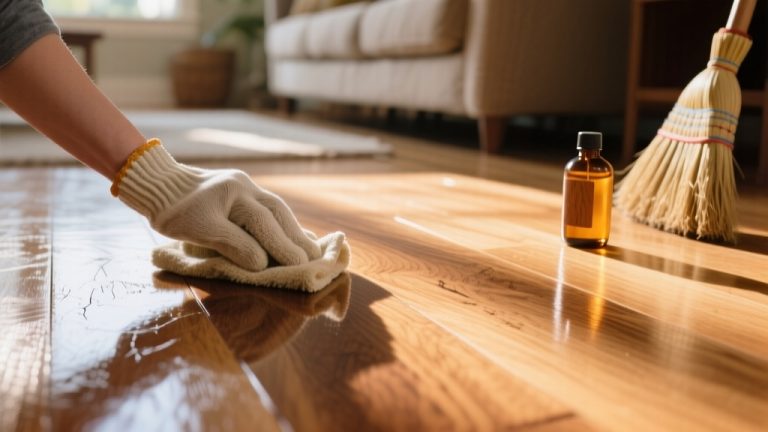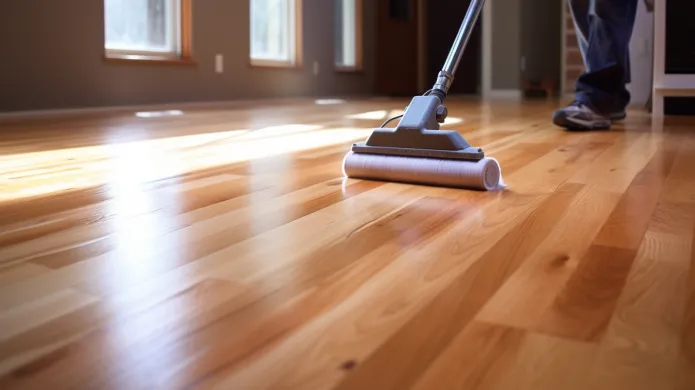When choosing your hardwood floor color, consider your room’s size and natural light. Lighter tones enlarge and brighten small spaces, while darker hues add warmth and depth to larger rooms. Match your floor’s warmth or coolness with your furniture and wall colors for harmony.
Also, factor in your lifestyle; medium to dark floors hide scratches better if you have pets or kids. Picking the right finish preserves the wood’s beauty over time. Explore these elements to create a stylish, balanced foundation that complements your home’s vibe.
Key Takeaways
- Consider room size and lighting: lighter floors enlarge space and reflect light, while darker floors add warmth and depth to larger rooms.
- Match floor color with furniture and wall tones for a harmonious and balanced interior design.
- Choose finishes and textures based on durability needs and maintenance preferences, with matte hiding scratches better than glossy.
- Factor in lifestyle elements like pets and children; medium to dark floors better conceal scratches and dirt.
- Follow current trends favoring warm, natural tones like honey and caramel for inviting, timeless hardwood floors.
Popular Hardwood Floor Color Options
Wondering which hardwood floor color will best elevate your space? Warm honey and golden tones offer a sun-kissed glow that invites cozy, earthy warmth into any room, perfect for enhancing natural light in open floor plans.
Warm honey and golden hardwood floors add a sun-kissed glow, cozy warmth, and brighten open spaces beautifully.
Blonde hardwood floors remain a top choice, especially wide plank European Oak with natural or oiled finishes that brighten and expand interiors effortlessly. Medium brown shades, found in Ash, White Oak, and Walnut, provide timeless versatility, harmonizing with a broad range of décor and wall colors.
For a modern twist, gray and greige tones create a refined, neutral backdrop suited to minimalist and Scandinavian styles. Dark brown and deep reds bring rich warmth and luxury, grounding spaces with dramatic depth, especially in traditional or transitional settings.
When selecting hardwood flooring, considering the humidity and moisture levels in your space can help maintain the floor’s durability and appearance over time.
Factors Influencing Hardwood Floor Color Selection
When choosing your hardwood floor color, consider how room size and lighting shape the space’s mood and perception. Lighter floors can open up smaller rooms and amplify natural light.
Selecting a color that aligns with your interior design style ensures a cohesive and aesthetically pleasing result. Natural hardwood floors reflect light well, making spaces appear larger and brighter, which is ideal for small rooms with limited natural light.
Darker tones add warmth and depth in larger areas. You’ll also want your flooring to complement your furniture and wall colors, creating a harmonious and inviting environment. Stained hardwood floors absorb more light, creating a cozy, warm ambiance that enhances the feel of spacious rooms.
Room Size Impact
How does the size of your room influence the choice of hardwood floor color? In smaller or compact spaces, light-colored hardwoods like maple or ash can visually expand your room by reflecting more light, creating an airy, open feel.
Pairing these with wide planks reduces visual breaks, enhancing spaciousness. Light-colored hardwood floors reflect more light, making rooms appear larger and more open. Regular sweeping hardwood floors helps maintain their brightness and cleanliness, which further enhances the spacious effect.
Conversely, dark floors add warmth and sophistication but tend to shrink the perceived area, making them ideal for larger rooms where intimacy is desired. When selecting dark floors in smaller spaces, balance them with light wall colors to avoid a cramped atmosphere.
Additionally, consider practical factors: lighter floors hide dirt better, suiting busier rooms. By aligning floor color and plank style with room size, you can craft a harmonious, aesthetically pleasing environment that supports your design intent and daily use.
Lighting and Ambiance
Although choosing a hardwood floor color often centers on the wood species and finish, the lighting in your space plays an equally essential role in shaping how those colors appear and influence the ambiance.
Natural sunlight reveals true wood tones, shifting warmth from cool mornings to amber evenings.
Since different light sources emit light at varying wavelengths, the same floor color may appear warmer or cooler depending on the spectral composition. Matte and satin finishes also affect how light interacts with the floor, influencing the overall room atmosphere.
Artificial lighting impacts color perception: warm 2700K–3000K bulbs enhance golden hues, perfect for cozy living areas, while cooler 5000K+ light suits modern kitchens by emphasizing neutral shades. The angle and intensity of light affect grain visibility—direct light sharpens details, whereas diffuse light softens texture.
Layered ambient lighting lets you tailor mood, highlighting red undertones or cooler grays depending on your floor choice. Choosing between matte and satin finishes further modifies the ambiance by controlling light reflection and sheen.
Furniture and Walls
Lighting shapes the perception of your hardwood floor, but the surrounding furniture and wall colors profoundly influence how the floor color integrates into your space. For example, dark floors with light furniture create striking contrast, while medium tones offer versatility.
Wall colors also dictate mood: warm walls with warm floors invite coziness, whereas neutral walls allow diverse furniture styles. It is important to match the finish of your furniture to the floor’s finish to create a harmonious and balanced look.
Choosing complementary tones and finishes ensures your hardwood floor harmonizes seamlessly with your room’s décor. Additionally, allowing floors to be fully dried and refinished before painting walls helps maintain both surfaces’ quality and prevents damage from floor sanding dust.
| Furniture & Floor | Wall & Floor Pairing |
|---|---|
| Glossy floors + bright furniture | Light floors + pastel walls |
| Matte floors + raw wood or light shades | Dark floors + white or light walls |
| Neutral rugs to bridge dark floors/light furniture | Warm floors + warm wall tones |
Color Impact on Room Atmosphere and Design
When you choose a hardwood floor color, you shape the very atmosphere and design flow of your room. Light tones brighten and expand your space, creating an airy, welcoming vibe. Medium shades offer warmth and versatility, blending effortlessly with various styles.
Dark floors add sophistication and coziness, especially in larger rooms. Different types of flooring materials, such as engineered hardwood, can also affect the overall look and feel due to their natural grain and texture.
Consider these impacts when selecting your floor hue:
- Light hardwoods enhance natural light and make small rooms feel spacious.
- Medium tones provide a balanced backdrop, complementing both traditional and modern décor.
- Dark colors create depth and elegance, pairing beautifully with light furnishings for striking contrast. Additionally, the tone influences ambiance, affecting whether a space feels open or intimate.
Your floor color sets the emotional tone and anchors your interior style, so pick one that aligns with the atmosphere you want to create.
Practical Considerations for Hardwood Color
You’ll want to take into account how maintenance demands vary with different hardwood colors, as lighter floors may hide dust better.
Meanwhile, darker tones can reveal scratches more readily. The finish and texture you choose also impact durability and ease of cleaning, influencing both appearance and long-term upkeep. Balancing these factors ensures your hardwood floor remains as stunning as it’s practical.
Additionally, considering your lifestyle factors such as pets and children can guide you toward a hardwood color that offers the best balance between beauty and durability. Keep in mind that the type of wood affects stain absorption and ultimately the final color tone on your floors.
Maintenance and Upkeep
Although hardwood floors bring timeless beauty to your space, maintaining their color requires consistent care and thoughtful upkeep. You’ll want to focus on protecting your investment by managing moisture, sunlight exposure, and everyday wear.
Here’s how to keep your floors looking vibrant:
- Moisture control: Avoid wet mops and standing water; maintain indoor humidity between 35%-55% to prevent warping and swelling.
- Sunlight protection: Limit direct sun exposure with window treatments and rotate rugs to ensure even aging and color retention.
- Surface preservation: Use area rugs and furniture pads to prevent scratches and dents; clean regularly with hardwood-specific cleaners to avoid damage.
When refinishing, consider whether to remove baseboards or protect them to achieve a seamless and professional look.
Finish and Texture
Maintaining your hardwood floor’s color means paying close attention not only to care but also to the finish and texture applied. The finish you choose influences both color depth and durability, while texture affects appearance and maintenance ease.
For instance, oil-based polyurethane enriches warmth and grain but yellows over time, whereas water-based finishes keep natural hues clear. Glossy finishes amplify grain visibility but reveal scratches, while matte tones mask imperfections for a subtle, modern look.
Additionally, water-based finishes are favored in homes with lower activity levels due to their minimal odors and quick drying, making them convenient for everyday living spaces. Proper maintenance, including avoiding wax on certain finishes, is essential to preserve color and prevent damage to the floor’s epoxy coating.
| Finish Type | Effect on Color & Texture |
|---|---|
| Oil-Based Polyurethane | Warmth, rich grain, yellow tint over time |
| Water-Based Polyurethane | Clear, natural color, less durable |
| Glossy Finish | Enhances grain, shows imperfections |
| Matte Finish | Subtle look, hides scratches |
Trends and Preferences in Hardwood Color Choices
As design sensibilities evolve in 2025, hardwood floor color trends are shifting toward warm, natural tones that create inviting and spacious atmospheres.
You’ll notice a move away from cool grays and whitewashed finishes, instead embracing rich honey, caramel, and chestnut hues that add warmth and depth. Selecting the right finish sheen is also crucial to enhance these colors and protect your floors with a durable hardwood floor sealant.
These colors complement both traditional and modern interiors while reflecting a growing eco-conscious mindset. Choosing sustainably sourced materials and finishes with low chemical emissions is increasingly important to many homeowners.
Consider these key trends when choosing your hardwood color:
- Warm, mid-tone woods like golden amber enhance light and openness.
- Textured finishes add subtle sophistication and tactile interest.
- Earthy, organic shades promote a natural, grounded aesthetic.
Matching Hardwood Color With Decor and Lifestyle
When you choose hardwood floor colors, considering how they interact with your decor and lifestyle guarantees a harmonious and functional space. Start by identifying the floor’s undertone—warm floors with reddish or yellow hues pair well with earth-toned walls, while cool-toned floors suit blues or grays.
Using RIVA MAX 10” Earth-colored cladding as an accent wall can complement warm hardwood tones and add sophistication. Choosing hardwood floor colors that complement your decor and lifestyle ensures a balanced, inviting space.
Match your flooring style to your interior design: modern minimalist spaces benefit from light, subtle grains, whereas traditional rooms thrive with rich, mid-to-dark tones. Think about your lifestyle too active households should opt for medium-to-dark floors that hide scratches, while light floors brighten small rooms.
Complement your floors with decor elements like natural-fiber rugs or metal accents, ensuring textures and tones enhance rather than clash. This thoughtful coordination creates a cohesive, inviting environment tailored to your daily needs.
Frequently Asked Questions
How Does Humidity Affect Hardwood Floor Color Over Time?
You’ll notice that humidity can subtly change your hardwood floor’s color over time. High moisture can darken wood or cause blotchy spots from mold growth. Fluctuating humidity accelerates aging, deepening the patina and altering hues unevenly.
Can Hardwood Floor Color Be Changed After Installation?
Changing your hardwood floor color after installation isn’t impossible it’s like painting the Mona Lisa over and over again with precision. You’ll need to sand down to bare wood, then stain and seal to achieve your desired shade.
Lighter tones are trickier to reach, and engineered or floating floors may limit your options. Remember, thorough prep and testing are key to getting that flawless, professional finish you’re aiming for.
What Are the Best Hardwood Colors for Radiant Floor Heating?
You’ll want to pick lighter to medium hardwood tones like natural white oak, which balance beauty and performance well with radiant floor heating. These colors retain heat moderately without absorbing too much, ensuring even warmth and avoiding hot spots.
Darker hues can warm faster but may create uneven heating. Opt for matte or low-gloss finishes to preserve your floor’s look and durability under radiant heat. Steering clear of thick coatings that block heat transfer is also advisable.
How Do Pet Nails Impact the Appearance of Different Floor Colors?
Pet nails tend to show up more on darker hardwood floors, especially those with high-gloss finishes, making scratches and pet hair more noticeable. You’ll find lighter floors like White Oak better at concealing nail marks, thanks to their subtle grain and color.
Choosing wood with pronounced grain patterns or textured finishes can also help mask scratches, keeping your floors looking elegant and less worn despite your pet’s playful paws.
Are There Hardwood Colors That Require Less Frequent Refinishing?
You’ll find that darker hardwood colors like walnut and mahogany often demand less frequent refinishing because their dense grain hides scratches and wear better. Mid-toned floors strike a balance, concealing dirt while maintaining aesthetic appeal, which can also extend refinishing intervals.
Lighter floors might show wear less but can reveal UV fading, prompting maintenance. Ultimately, finish type and traffic play big roles alongside color in how often you’ll refinish.
Warm, Elegant, or Modern? Define Your Home’s Personality
Choosing the perfect hardwood floor color isn’t just about picking what looks good—it’s about enhancing your space’s vibe and matching your lifestyle. Consider lighting, room size, and existing decor to find a tone that elevates your home’s atmosphere.
Are you aiming for warmth, elegance, or modern simplicity? With trends evolving, your choice should reflect both timeless appeal and personal taste. After all, your floors set the foundation for every design decision you make.

